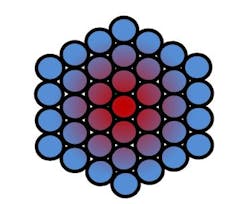TIA TSB-184-A standard, providing PoE cabling guidelines, in final balloting stage
The Telecommunications Industry Association (TIA) standards document that will provide recommendations for PoE cabling systems soon will be ready for publication. TIA TSB-184-A will officially be titled Guidelines for Supporting Power Delivery Over Balanced Twisted-Pair Cabling. It will be an update to the original TSB-184 document, which has the same title and was published in 2009.
TSB-184-A is in the standard-development stage called default balloting; the default ballot will close on December 2. If the document goes through this balloting stage with no negative votes and no technical comments, it will be approved for publication.
The document provides recommendations for the installation and management of twisted-pair cables that will support the supply of direct-current (DC) power to networked devices, in addition to carrying data to those devices. Of particular note, the recommendations will aim to minimize the temperature rise in groups or bundles of cables that support DC power delivery. The topic of the heat generated in cable bundles—particularly in large bundles—has gained much attention because the 2017 edition of the National Electrical Code will address the issue. The TSB-184-A document will be the culmination of years of study and effort by the TIA’s TR-42.7 subcommittee in cooperation with other standards-development organizations, including the IEEE 802.3 committee responsible for the “Power over Ethernet” series of standards 802.3af, 802.3at, and the forthcoming 802.3bt.
A late draft of TSB-184-A includes the following explanation: “When twisted-pair cabling is used to remotely power a device, the majority of the power entering the cable is successfully delivered to the device being powered; only a small percentage dissipated as heat in the cabling. This dissipation of power can cause the cabling to increase in temperature above the ambient temperature of the environment in which the cabling is installed. It is recommended to minimize cable temperature rise to reduce long-term cable degradation, to minimize negative effect on transmission performance and reduce the amount of heat added to the surrounding environment. This TSB describes methods to help manage temperature rise and keep cables below their maximum temperature ratings.” The image on this page is a graphical representation of that dissipation, showing the highest-temperature cables in the middle of the bundle.
Sections of TSB-184-A address cabling selection and performance, temperature rise, cable bundling and bundle sizes, DC resistance, and remote powering configurations. An annex includes recommendations for bundling configurations.
TIA TSB-184-A will be one topic of discussion during a web seminar that will be held on November 10. The seminar, titled TIA Cabling Standards Update and hosted by Cabling Installation & Maintenance, will include presentations on TSB-184-A, the TIA-1179-A healthcare cabling standard, and TIA TSB-5021, which addresses twisted-pair cabling for 2.5- and 5-Gbit/sec transmission.
You can find more information on that web seminar here and register for it here.
